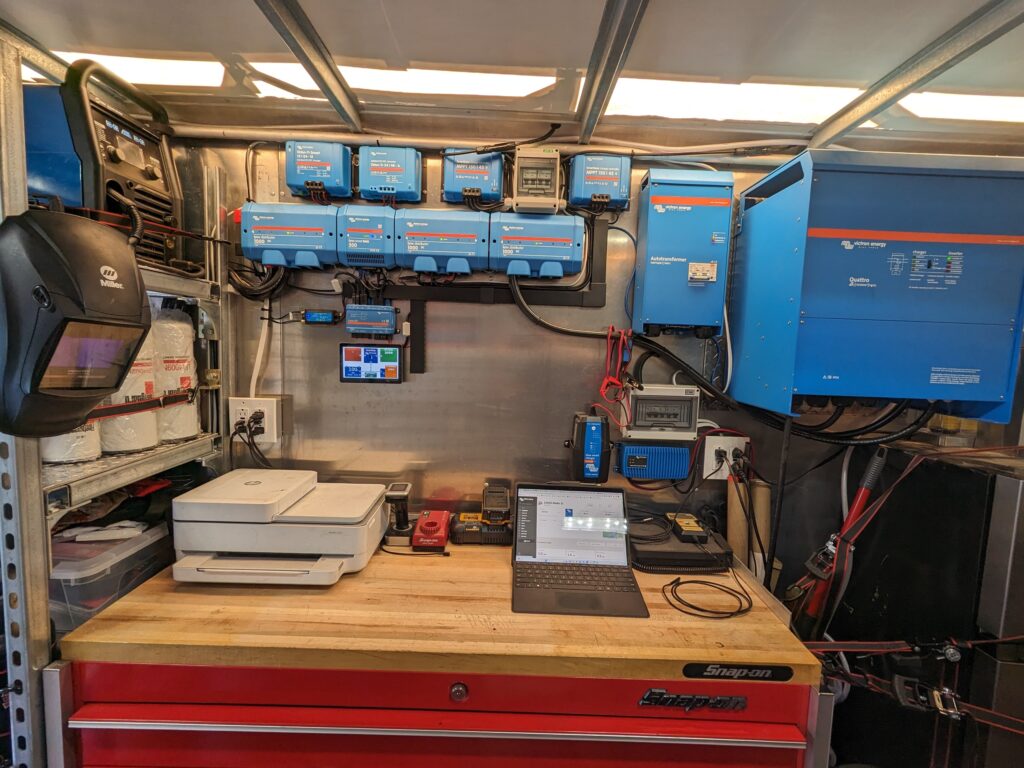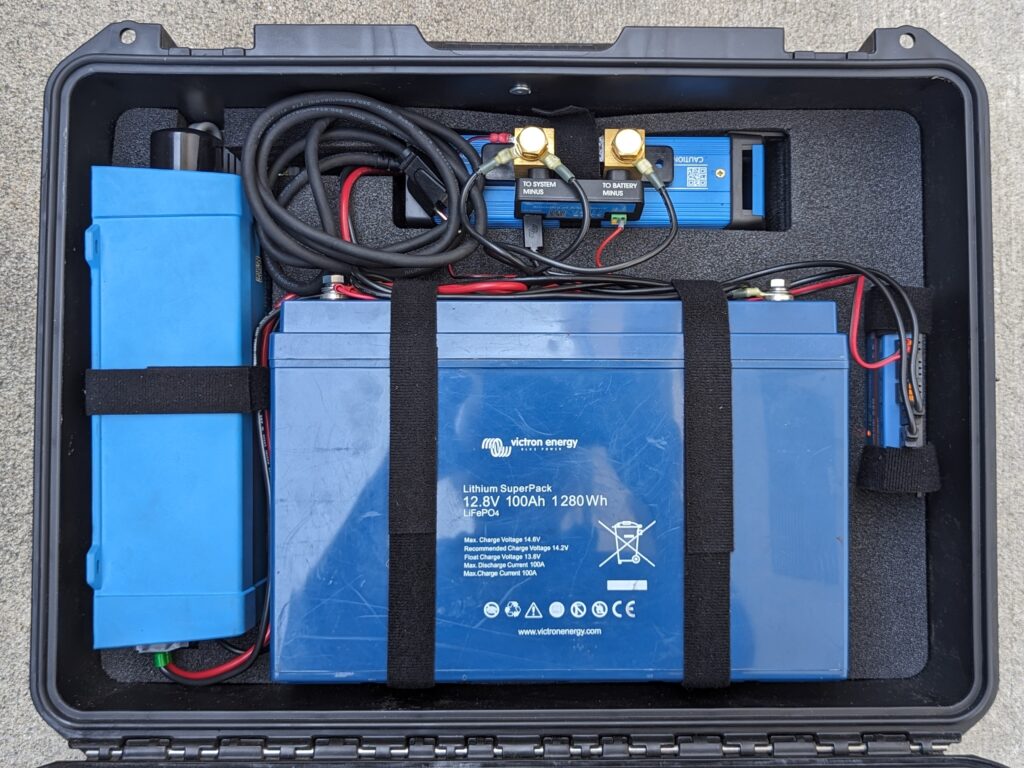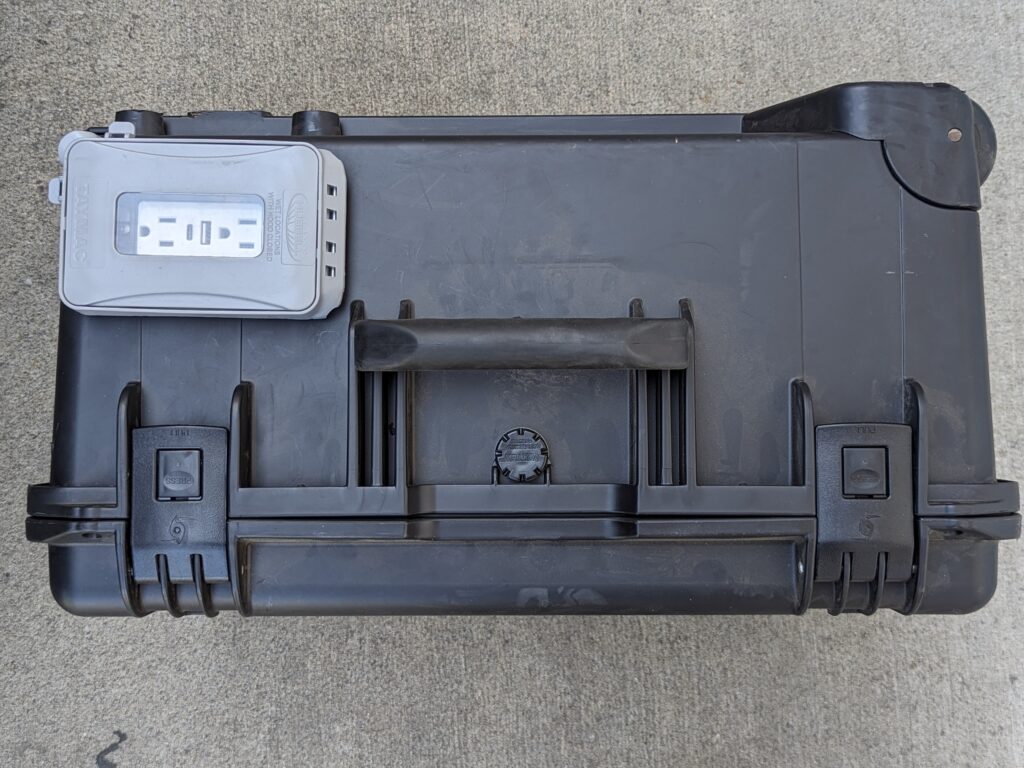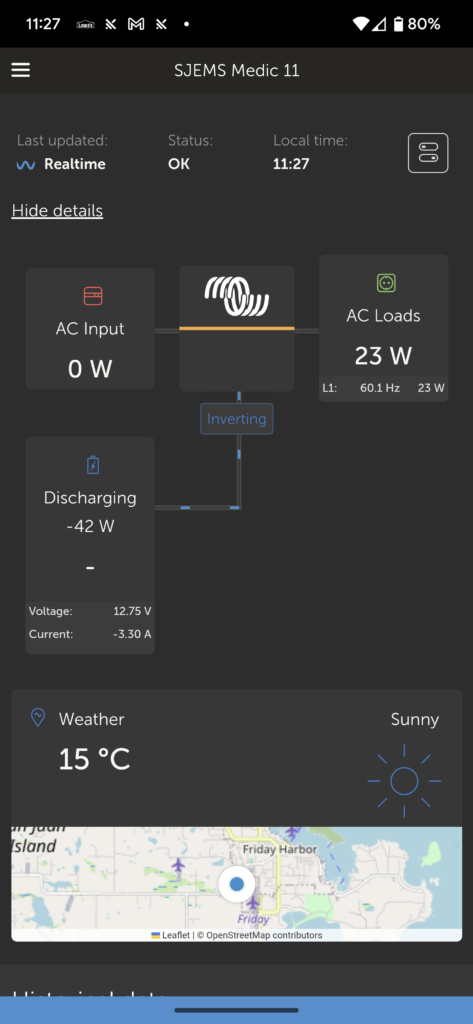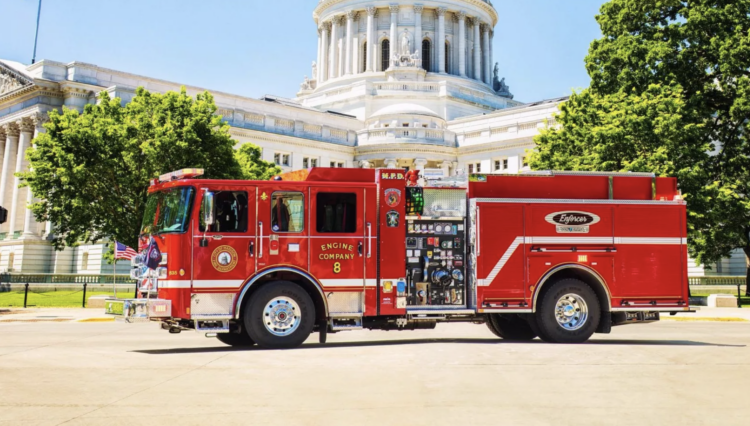
Even when a firefighter drives to work in an Electric Vehicle it doesn’t stop them being surprised to learn that their fire truck will soon be electric, too.
In Washington State, USA and elsewhere around the globe, mandatory change is coming!
So it’s reassuring for emergency fleet managers in the Washington region that Paul Spencer, based in Seattle, has been a certified Master Emergency Vehicle Technician for 25 years – and happens to be an expert in mobile energy.
Paul’s company Fire Fleet Maintenance has just completed the fit-out of an electric demo-truck rigged as a training centre and a store packed with all the devices and accessories needed to build remote energy systems for all kinds of applications.
Welcome Change?
Everyone knows the electric transport revolution is going to happen but Fire station managers are nervous about what comes next if their battery goes flat. At the moment, they carry emergency diesel tanks – but aren’t yet aware of the back up measures if you’re all-electric.
So Paul’s job right now is to demonstrate how Fire and Medical trucks can meet their mandatory zero emissions target and, of course, work at emergency incidents with 100% reliability.
In fact it was in order to help fleet managers understand how they can embrace electric vehicles and on-board power systems which run autonomously that Paul converted his Demo Truck which is provided with 40kWh of Lithium Smart battery storage.
To show what it’s capable of he uses a 48/10000 Quattro Inverter/Charger which powers a Welder, Plasma Cutter and air compressor for metal fabrication and fleet repair work.
The on-board power system includes an Autotransformer which brings with it the possibility of providing mobile Level 2 Electric Vehicle charging. The idea here is to demonstrate that even if an Electric Emergency Vehicle runs low on battery power on a long assignment, it doesn’t have to leave the job to get a recharge.
Paul’s mobile rig which he simply calls ‘Truck 2’ has roof-mounted solar panels together with two MPPT 150/45 Solar Charge Controllers for battery charging from the sun. When the vehicle is travelling, or anytime the engine is running, the vehicle alternator’s charge current is controlled by an Orion DC/DC charger …or in this case two Orion chargers configured to supply the 48V battery from a 12V alternator.
Victron Energy Lithium batteries benefit from a specialised Battery Management System in the Lynx Smart BMS device and the DC power distribution is kept tidy by integrating with the Lynx Distribution system which provides 1000A rated busbars together with monitored DC fuses.
A Cerbo GX is the communication device which harmonises the entire system and makes system data and programming options available locally – using a GX Touch 70 – and also remotely on the Victron Remote Management (VRM) platform.
Mobile Electric Emergency Vehicle Charging
One of Fire Fleet Maintenance contracts is with San Juan Island EMS who provide emergency 9-1-1 life support, rescue and transport to the residents and visitors of the town of Friday Harbor, San Juan Island, WA.
San Juan Island EMS have recently taken delivery of an electric Ford 150 truck – the new Ford Lightning. Paul’s truck, for example, would be able to replenish the Ford Lightening battery from 0% to just about 50% State of Charge – if a remote recharge were ever required – without de-tasking the emergency vehicle!
Power Outage – emergency power for community patients
San Juan island is remote in the sense that it can only be reached by ferry.
Island residents continue to experience a number of short-duration power outages. An extended power outage last December (and also across much of Washington state) focussed minds about how to become more power self-reliant – particularly amongst the retirement community many of whom rely on electric-powered devices such as Continuous Positive Airways Pressure (CPAP) equipment to ease medical conditions.
Paul has developed a drop-off emergency power supply to meet the need in exactly that scenario.
Housed inside the protection of a weather and shockproof pelican case, a Phoenix 12/500 Inverter provides AC power from a 12/100Ah Lithium SuperPack which has an integrated Battery Management System (BMS). The on-board BMS makes it ideal for non-technical use without the risk of incurring expensive battery damage through over-depletion as the battery will automatically disconnect from its load when the internal voltage drops below a set point. The SuperPack battery is also protected against overcharge, and against unsuitable operating temperatures. The package includes an IP22 Battery Charger rated at 12V/30A.
But the clever bit is yet to come – the case also packs a device called a GlobalLink 520 which allows the medical healthcare provider to observe the status of the emergency power supply – such as battery state of charge – direct from their control station in real time. The GlobalLink 520, which includes a 5-year prepaid sim card, automatically connects to the cellular network wherever it’s deployed to report system status to Victron Remote Management (VRM) – a free to use remote monitoring platform. GlobalLink 520 can either be hard-wired to monitored devices using its two VE.Direct ports, and/or it can be wirelessly connected to up to 10 ‘smart’ devices using its on-board Bluetooth Low Energy (BLE) communication.
The power of this arrangement is that the healthcare operator knows when they need to arrange a client visit to exchange or re-charge the emergency power supply.
Overlander?
As a mobile classroom Paul’s Demo Truck is an attractive resource for Overland adventurers, mobile home owners and Van lifers, too.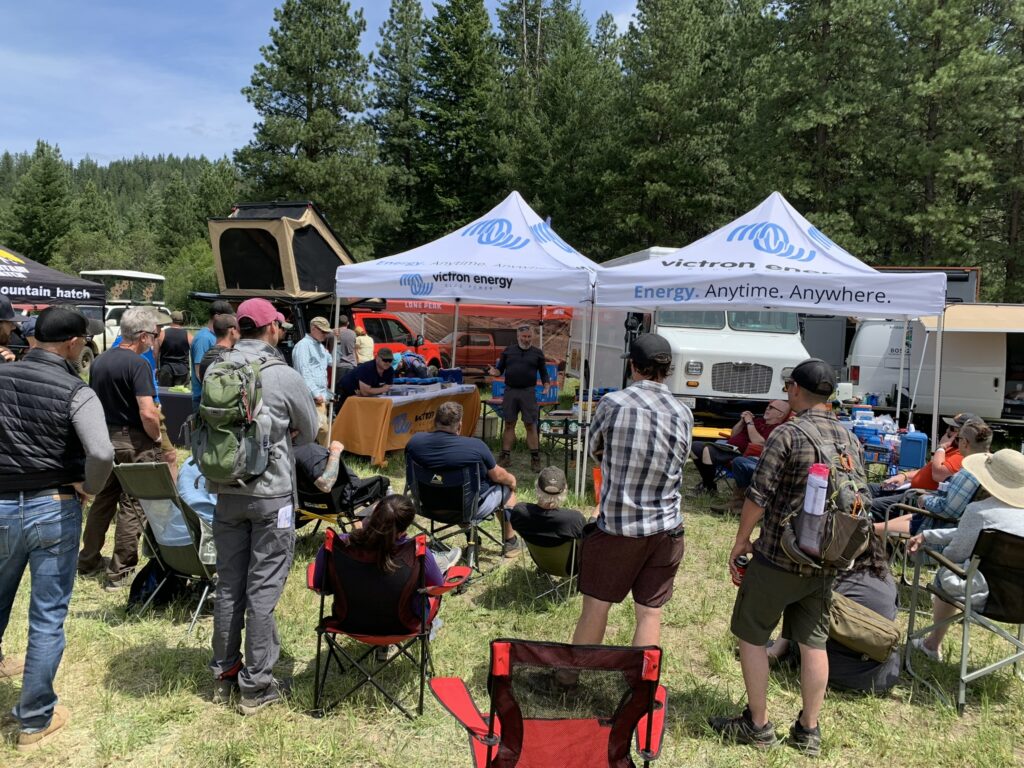
Paul took his Truck to NorthWest Overland Rally in June where he taught a class of 30 attendees about installing a mobile power system suitable for their family travel plans. Right through the show Paul was so busy demonstrating power devices, explaining their applications and the problems they solve that he wished he had more help!
Benefit of experience – keeping a search and rescue Drone airborne.
A lifetime career in Emergency response has led to another innovation in search and rescue – this time for the Police/SWAT department. During extended search and rescue assignments one of the most stressful experiences for the Drone pilot is the realisation that low battery power is limiting the remaining flight time but the operation is not yet complete.
A specialist charging pack puts the pilot back in charge with unlimited drone power from stored and from recharge power. AC power is supplied to a TV monitor, and VHF radio charging is also available.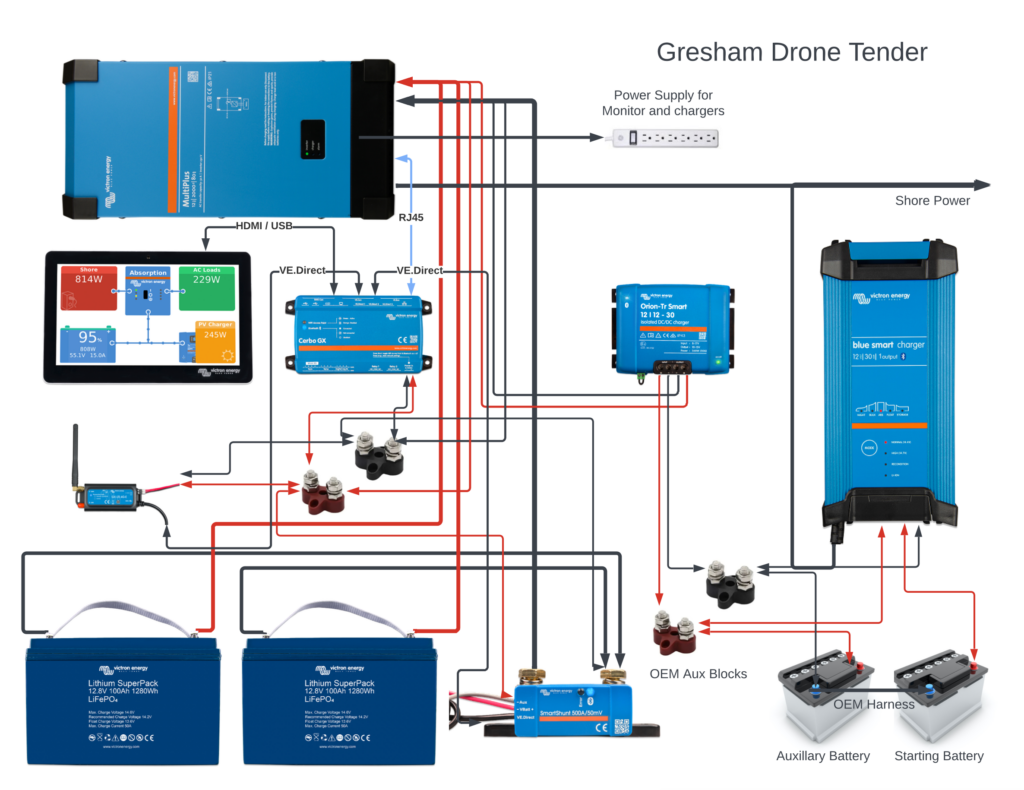
More than that, power consumption and battery state of charge data is recorded for flight operation analysis – leading to better preparedness and future flight management. The whole package adds to a really robust drone deployment that will get even better over time.
What we are seeing with Paul Spencer and Fire Fleet Management’s power applications is what happens when you combine a lifetime of specialist experience with robust products capable of providing remote energy, anytime, anywhere.
We are grateful to Pierce Manufacturing for providing their firetruck image at the head of this article.






